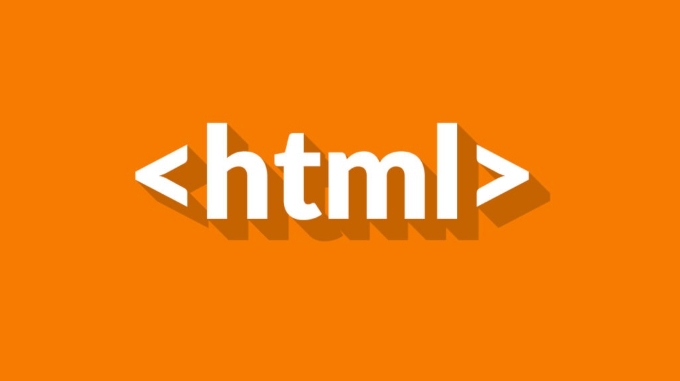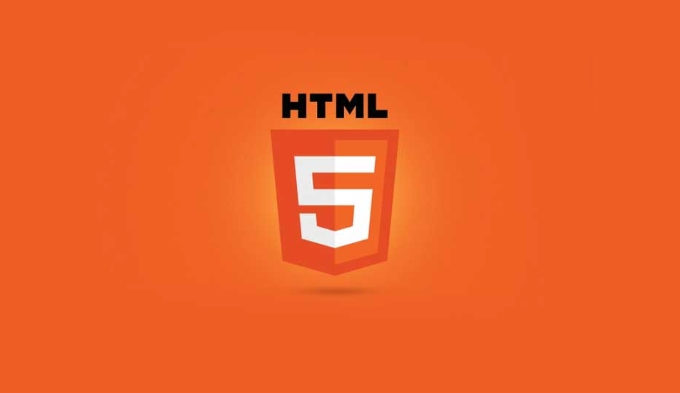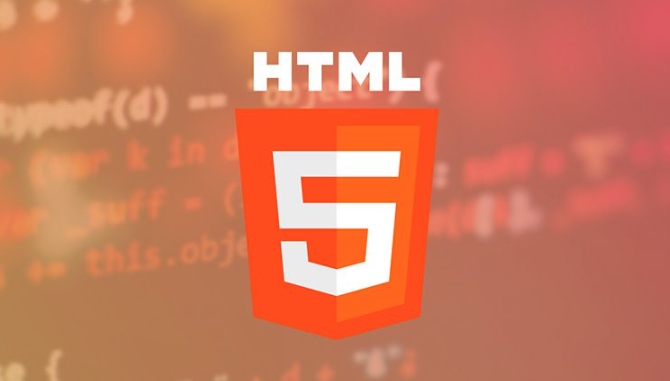The methods of creating ordered and unordered lists in HTML are as follows: 1. Use the
<ol> tag to create an ordered list, suitable for content with order or priority, as described in the step, numbered by default; 2. Use the <ul> tag to create an unordered list, suitable for content with parallel unordered content, such as the navigation menu, marked with dots by default; 3. Lists can be used nested, and multi-level structure is implemented by inserting a new <ul> or <ol> into <li>, which is often used for directory navigation. Each list item must be wrapped with a <li> tag, combined with CSS to achieve rich styles and layouts.
Creating ordered and unordered lists in HTML is actually very simple, and you only need to use the right tags to achieve it. The two lists are suitable for different content scenarios: ordered lists are suitable for content with order or priority, such as step instructions; unordered lists are more suitable for entries that are parallel and without order, such as navigation menus or function points.

1. Create an Ordered List with <ol></ol>
If you want to show a content in a clear order, such as operation steps, ranking lists, etc., you should use an ordered list. It will display each item in numeric form by default.

The basic structure is as follows:
<ol> <li>Step 1</li> <li>Step 2</li> <li>Step 3</li> </ol>
The browser will render the above code into a numbered list:
 <ol><li> first step<li> Step 2<li> Step 3
<ol><li> first step<li> Step 2<li> Step 3hint:
<ul><li> The default is a number number, but you can modify it to letters or Roman numerals via CSS.<li> Each<li> tag represents a list item and must be placed in <ol> or <ul> . 2. Create an Unordered List with <ul>
When you want to list some information that does not need to emphasize order, such as menu items, function points, recommended content, etc., you can use an unordered list. It is marked by dots (?) by default.
Basic writing method:
<ul> <li>Home </li> <li>About Us</li> <li>Contact Us</li> </ul>
The effect is our common bullet list:
<ul><li> front page<li> about Us<li> Contact UsTips:
<ul><li> You can use CSS to replace bullets with icons or other styles.<li> Commonly used in content modules such as website navigation bar, sidebar, etc.3. Lists can be used in nesting
Sometimes we need more complex structures, such as a submenu under a main menu. At this time, you can nest <ul> and <ol> to use.
For example:
<ul>
<li>Fruit<ul>
<li>Apple</li>
<li>Banana</li>
</ul>
</li>
<li>Vegetables<ul>
<li>Carrot</li>
<li>Broccoli</li>
</ul>
</li>
</ul>This realizes a multi-level unordered list structure, which is often used in scenarios such as directory navigation and document outlines.
Basically that's it. Although HTML list tags seem simple, they are an important part of building web structure. As long as you master the basic usage of <ol></ol> , <ul> and <li> , and combine it with CSS style control, you can make various practical and beautiful page layouts.
The above is the detailed content of How to create ordered and unordered lists in HTML. For more information, please follow other related articles on the PHP Chinese website!

Hot AI Tools

Undress AI Tool
Undress images for free

Undresser.AI Undress
AI-powered app for creating realistic nude photos

AI Clothes Remover
Online AI tool for removing clothes from photos.

Clothoff.io
AI clothes remover

Video Face Swap
Swap faces in any video effortlessly with our completely free AI face swap tool!

Hot Article

Hot Tools

Notepad++7.3.1
Easy-to-use and free code editor

SublimeText3 Chinese version
Chinese version, very easy to use

Zend Studio 13.0.1
Powerful PHP integrated development environment

Dreamweaver CS6
Visual web development tools

SublimeText3 Mac version
God-level code editing software (SublimeText3)

Hot Topics
 Explain the purpose of the role attribute in ARIA.
Jun 14, 2025 am 12:35 AM
Explain the purpose of the role attribute in ARIA.
Jun 14, 2025 am 12:35 AM
ARIA's role attribute is used to define the role of web elements and improve accessibility. 1. Role attribute helps assistive technology to understand the functions of elements, such as buttons, navigation, etc. 2. Use role attributes to assign specific roles to non-semantic HTML elements. 3. The role attribute should be consistent with the element behavior and be verified by the accessibility tool test.
 HTML and Design: Creating the Visual Layout of Websites
Jun 14, 2025 am 12:39 AM
HTML and Design: Creating the Visual Layout of Websites
Jun 14, 2025 am 12:39 AM
How to create a website layout? 1. Use HTML tags to define the content structure, such as, ,. 2. Control styles and positions through CSS, using box model, float or Flexbox layout. 3. Optimize performance, reduce HTTP requests, use cache and optimize images, and ensure responsive design.
 How do I stay up-to-date with the latest HTML standards and best practices?
Jun 20, 2025 am 08:33 AM
How do I stay up-to-date with the latest HTML standards and best practices?
Jun 20, 2025 am 08:33 AM
The key to keep up with HTML standards and best practices is to do it intentionally rather than follow it blindly. First, follow the summary or update logs of official sources such as WHATWG and W3C, understand new tags (such as) and attributes, and use them as references to solve difficult problems; second, subscribe to trusted web development newsletters and blogs, spend 10-15 minutes a week to browse updates, focus on actual use cases rather than just collecting articles; second, use developer tools and linters such as HTMLHint to optimize the code structure through instant feedback; finally, interact with the developer community, share experiences and learn other people's practical skills, so as to continuously improve HTML skills.
 How do I use the element to represent the main content of a document?
Jun 19, 2025 pm 11:09 PM
How do I use the element to represent the main content of a document?
Jun 19, 2025 pm 11:09 PM
The reason for using tags is to improve the semantic structure and accessibility of web pages, make it easier for screen readers and search engines to understand page content, and allow users to quickly jump to core content. Here are the key points: 1. Each page should contain only one element; 2. It should not include content that is repeated across pages (such as sidebars or footers); 3. It can be used in conjunction with ARIA properties to enhance accessibility. Usually located after and before, it is used to wrap unique page content, such as articles, forms or product details, and should be avoided in, or in; to improve accessibility, aria-labeledby or aria-label can be used to clearly identify parts.
 How do I create a basic HTML document?
Jun 19, 2025 pm 11:01 PM
How do I create a basic HTML document?
Jun 19, 2025 pm 11:01 PM
To create a basic HTML document, you first need to understand its basic structure and write code in a standard format. 1. Use the declaration document type at the beginning; 2. Use the tag to wrap the entire content; 3. Include and two main parts in it, which are used to store metadata such as titles, style sheet links, etc., and include user-visible content such as titles, paragraphs, pictures and links; 4. Save the file in .html format and open the viewing effect in the browser; 5. Then you can gradually add more elements to enrich the page content. Follow these steps to quickly build a basic web page.
 How do I create checkboxes in HTML using the element?
Jun 19, 2025 pm 11:41 PM
How do I create checkboxes in HTML using the element?
Jun 19, 2025 pm 11:41 PM
To create an HTML checkbox, use the type attribute to set the element of the checkbox. 1. The basic structure includes id, name and label tags to ensure that clicking text can switch options; 2. Multiple related check boxes should use the same name but different values, and wrap them with fieldset to improve accessibility; 3. Hide native controls when customizing styles and use CSS to design alternative elements while maintaining the complete functions; 4. Ensure availability, pair labels, support keyboard navigation, and avoid relying on only visual prompts. The above steps can help developers correctly implement checkbox components that have both functional and aesthetics.
 How do I minimize the size of HTML files?
Jun 24, 2025 am 12:53 AM
How do I minimize the size of HTML files?
Jun 24, 2025 am 12:53 AM
To reduce the size of HTML files, you need to clean up redundant code, compress content, and optimize structure. 1. Delete unused tags, comments and extra blanks to reduce volume; 2. Move inline CSS and JavaScript to external files and merge multiple scripts or style blocks; 3. Simplify label syntax without affecting parsing, such as omitting optional closed tags or using short attributes; 4. After cleaning, enable server-side compression technologies such as Gzip or Brotli to further reduce the transmission volume. These steps can significantly improve page loading performance without sacrificing functionality.
 How do I embed video in HTML using the element?
Jun 20, 2025 am 10:09 AM
How do I embed video in HTML using the element?
Jun 20, 2025 am 10:09 AM
To embed videos in HTML, use tags and specify the video source and attributes. 1. Use src attributes or elements to define the video path and format; 2. Add basic attributes such as controls, width, height; 3. To be compatible with different browsers, you can list MP4, WebM, Ogg and other formats; 4. Use controls, autoplay, muted, loop, preload and other attributes to control the playback behavior; 5. Use CSS to realize responsive layout to ensure that it is adapted to different screens. Correct combination of structure and attributes can ensure good display and functional support of the video.






